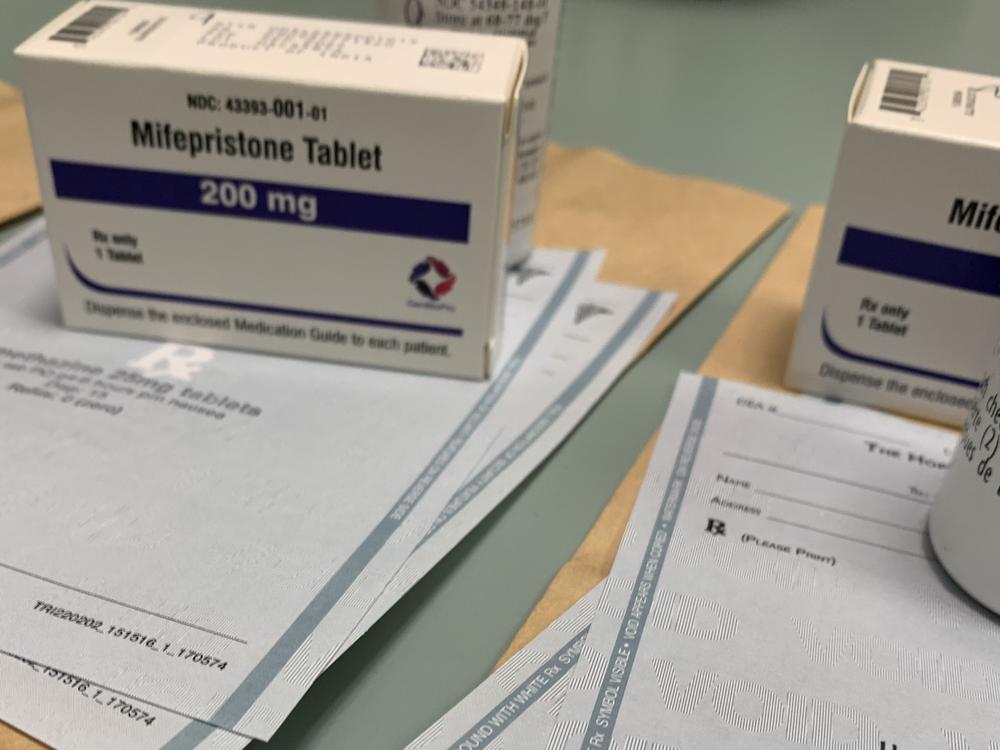Section Branding
Header Content
Abortion with no medical help? It nearly doubled in 2023, study shows
Primary Content
The percentage of people who say they’ve tried to end a pregnancy without medical assistance increased after the Supreme Court overturned Roe v. Wade. That’s according to a study published in the online journal JAMA Network Open.
Tia Freeman, a reproductive health organizer, leads workshops for Tennesseans on how to safely take medication abortion pills outside of medical settings.
Reasons vary
Abortion is almost entirely illegal in Tennessee. Freeman, who lives near Nashville, said people planning to stop pregnancies have all sorts of reasons for wanting to do so without help from the formal health care system — including the cost of traveling to another state, challenge of finding child care, and fear of lost wages.
“Some people, it’s that they don’t have the support networks in their families where they would need to have someone drive them to a clinic and then sit with them,” said Freeman,who works for Self-Managed Abortion; Safe and Supported, a U.S.-based project of Women Help Women, an international nonprofit that advocates for abortion access.
“Maybe their family is superconservative, and they would rather get the pills in their home and do it by themselves,” she said.
The new study is from Advancing New Standards in Reproductive Health, a research group based at the University of California-San Francisco. The researchers surveyed more than 7,000 people ages 15 to 49 from December 2021 to January 2022 and another 7,000-plus from June 2023 to July 2023.
Of the respondents who had attempted self-managed abortions, they found the percentage who used the abortion pill mifepristone was 11 in 2023 — up from 6.6 before the Supreme Court ended federal abortion rights in 2022.
Privacy concerns
One of the most common reasons for seeking a self-administered abortion was privacy concerns, said a study co-author, epidemiologist Lauren Ralph.
“So not wanting others to know that they were seeking or in need of an abortion or wanted to maintain autonomy in the decision,” Ralph said. “They liked it was something under their control that they could do on their own.”
Kristi Hamrick, vice president of media and policy at Students for Life Action, a national anti-abortion group, said she doesn’t believe the study findings, which she said benefit people who provide abortion pills.
“It should surprise no one that the abortion lobby reports their business is doing well, without problems,” Hamrick said in an emailed statement.
Ralph said in addition to privacy concerns, state laws criminalizing abortion also weighed heavily on women’s minds.
“We found 6% of people said the reason they self-managed was because abortion was illegal where they lived,” Ralph said.
Hitting themselves, also reported
In the JAMA study, women who self-managed abortion attempts reported using a range of methods, including using drugs or alcohol, lifting heavy objects, and taking a hot bath. In addition, about 22% reported hitting themselves in the stomach. Nearly 4% reported inserting an object in their body.
The term “self-managed abortion” may conjure images of back-alley procedures from the 1950s and ’60s. But OB-GYN Laura Laursen, a family planning physician in Chicago, said self-managed abortions using medication abortion — the drugs mifepristone and misoprostol — are far safer, whether done inside or outside the health care system.
“They’re equally safe no matter which way you do it,” Laursen said. “It involves passing a pregnancy and bleeding, which is what happens when you have a miscarriage. If your body doesn’t have a miscarriage on its own, these are actually the medications we give women to pass the miscarriage.”
Since Roe’s end, more than 20 states have banned or further restricted abortion.
KFF Health News is a national newsroom that produces in-depth journalism about health issues and is one of the core operating programs at KFF.

